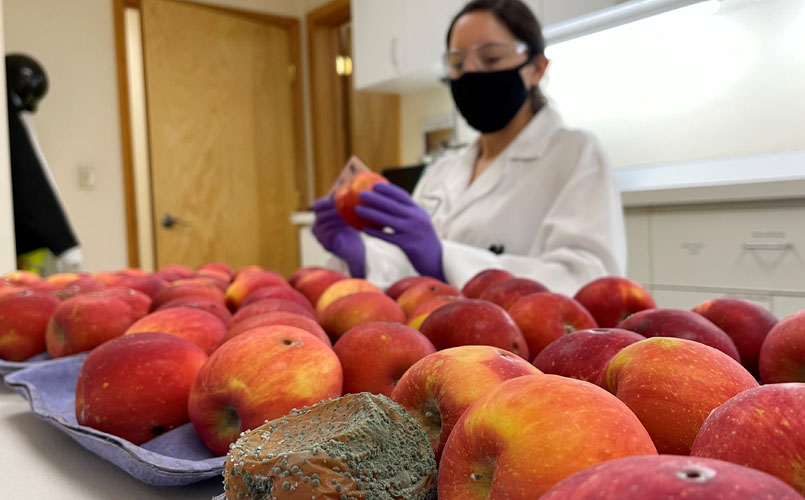Keeping Decay at Bay
Originally published in Western Fruit Grower, November 2021 edition
Growers, packers work to extend the usable life of postharvest fungicides.
With postharvest disease control increasing in complexity, Pace International is developing a fungicide resistance monitoring program that characterizes the fungicide resistance profile of certain decay-causing pathogens. In so doing, the company aims to strengthen postharvest fungicide rotation programs to prevent decay, maintain freshness, extend shelf life, and ensure the quality and market value of fruits and vegetables grown in the U.S.
“Postharvest quality starts at the orchard level,” Rodrigo Cifuentes, Pace International Executive V.P and COO, says. “It is important to understand the history of the orchard blocks, seasonal weather conditions, expected storage conditions, and the main postharvest fungal pathogens that affect the fruit. This allows for the right products to be selected — both preharvest and postharvest — so that an effective and tailored disease control program can be implemented.”
Growers should avoid using the same active ingredients or the same or similar mode of action in the field or after harvest, Cifuentes says. This will help prevent placing selection pressure on fungicide-resistant pathogens while also extending the life of the available postharvest fungicides, he says.
Developing new conventional crop protection products, including fungicides, can cost hundreds of millions of dollars, as safety and regulatory hurdles have increased over time, Cifuentes says. The many hurdles to register new active ingredients for the postharvest market include broadspectrum activity, novel mode of action, being adaptable to different postharvest practices, exhibiting a favorable toxicological profile, and getting maximum residue limits (MRLs) established for multiple crops and importing countries worldwide.
“Traditionally, almost all postharvest fungicides available today were originally developed for in-field use and later found applications in the postharvest sector,” Cifuentes says. “As novel in-field fungicides coming from the main crop protection R&D companies is predicted to be more limited in the years ahead, it is imperative that growers, packers, and postharvest companies work together to implement the proper protocols, products, and technologies to extend the usable life of the postharvest fungicides currently available.”












